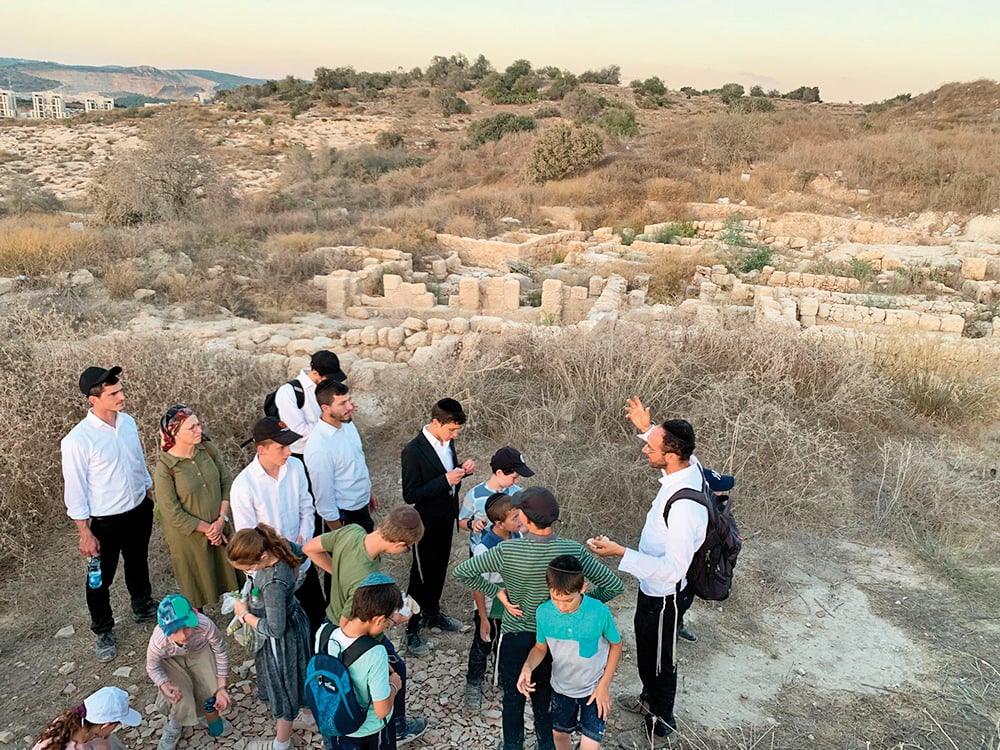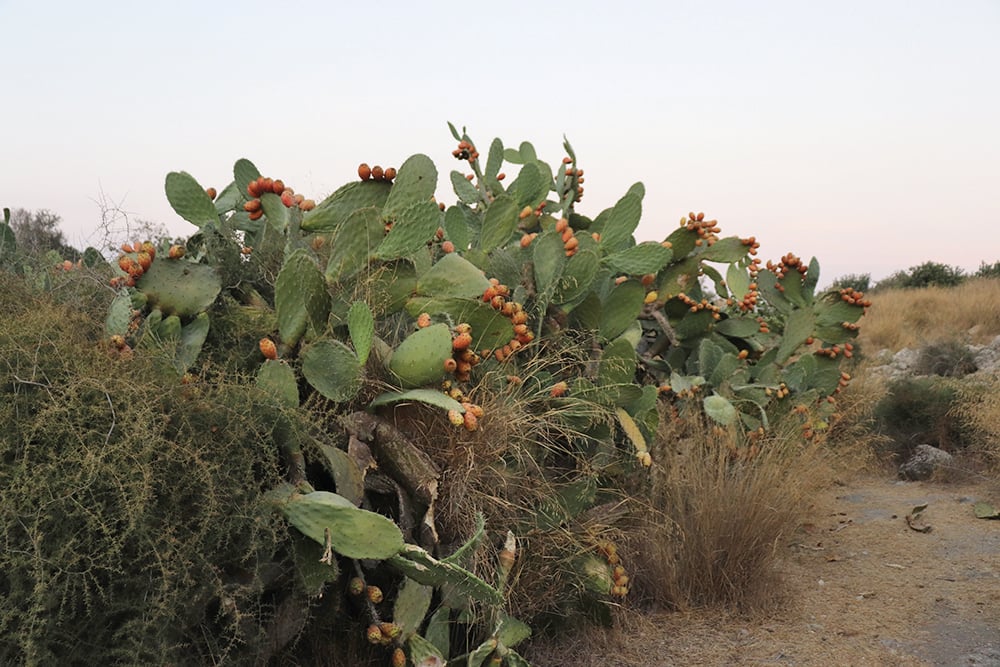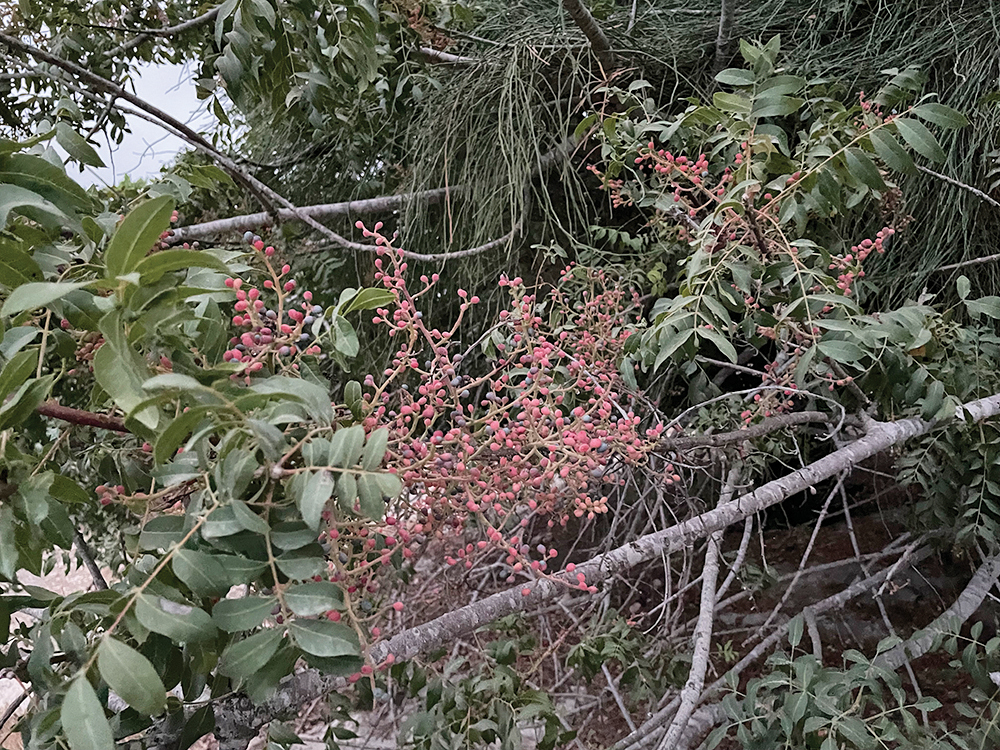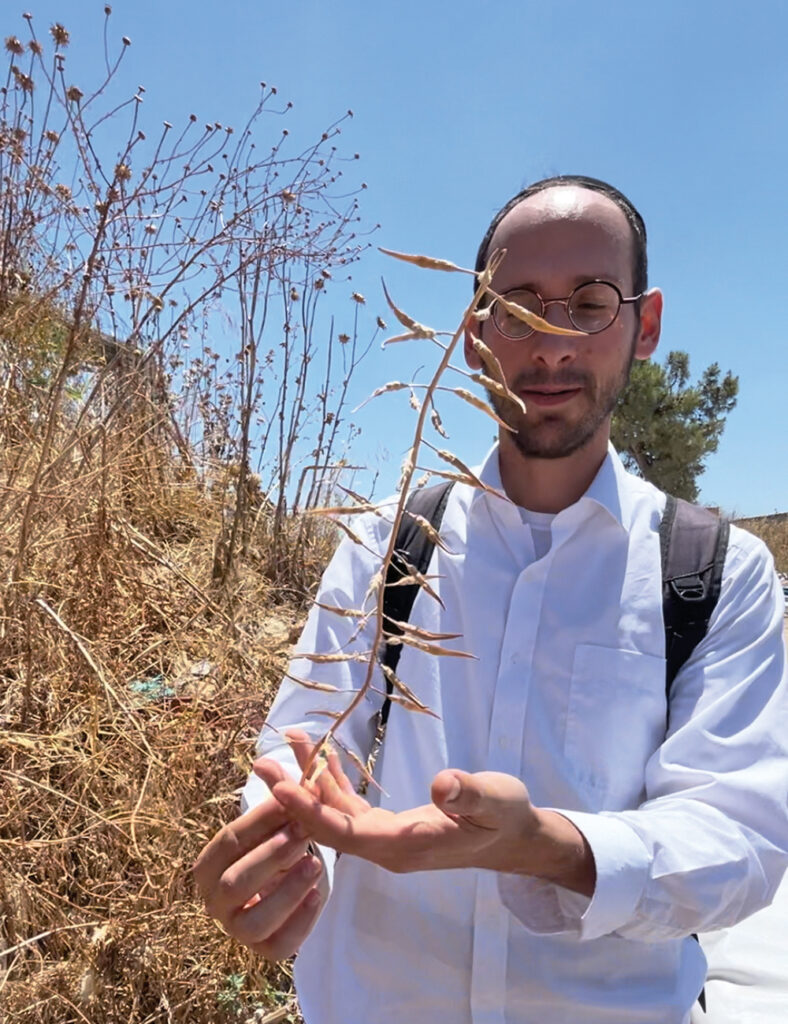
As Sukkot approaches, we set out on a quest for a stunning set of arba minim. It’s a great time to pause and notice what we’re doing: searching for four random, mostly inedible plants.
Why? To pick them up and shake them every morning for a week.
It seems so bizarre. How can this all possibly make me a better person, the world a better place?
Perhaps because of this mitzvah’s mysteriousness, Jewish sages taught lots of allegories and allusions about the four species. This detail represents that concept, we’re taught, and that concept, in turn, symbolizes a sublimely profound spiritual principle.
Folks who like the practical side of things aren’t left out. Instead of plumbing the plants’ spiritual depths, we’ll invest tons of time and money in procuring an etrog without the slightest discoloring, a perfectly straight lulav whose top isn’t even a millimeter “open,” and hadasim whose three leaves revolve around the stem in a line as flat as the equator.

Let’s Get Real
Neither option—mysticism or minutiae—satisfies me. I want to appreciate the Torah’s instruction to take and shake four plants, plain and simple. For the four species’ esoteric messages and tiny details to have meaningful reality, I must first directly experience their elementary value right here and now, as four simple plants.
Perhaps these challenges spurred the Rambam (Moreh Nevuchim 3:43) to choose this mitzvah to set the score straight on the sages’ allegorical interpretations of the Torah’s stories and commandments. Although they are all true and important, the Rambam explained, don’t miss the basic biblical text because you’re pondering what each word represents in your body, your world, and other worlds.
Thankfully, the Rambam also offered an explanation of the arba minim.

Entering Israel
The Sukkot holiday celebrates Hashem’s caring for us while we wandered in the desert after receiving the Torah at Mount Sinai. But the Torah’s tale doesn’t end there: After Moshe passed away, Yehoshua led the Chosen People into the Chosen Land.
What joy they felt upon entering a fertile, habitable country of their own after four decades in dry wilderness!
To remember that moment with gratitude, Hashem instructed us to hold one of Israel’s most beautiful fruits (etrog), branches with the most fragrant smells (hadasim) and beautiful leaves (lulav), and its most beautiful grasses (aravot).
These plants, added the Rambam, “were common in Israel in those days, so everybody was able to find them.”
Four Species, or Seven Species?
I have a question on the Rambam.
Didn’t the Torah already characterize Israel’s blessed land with seven other plants: wheat, barley, grapes, pomegranates, figs, dates and olives? The first fruits of these plants were offered every year in the Temple, and even today we recite a special blessing after eating them.
Why designate four new plants that have little practical use? Strangely enough, one of each group comes from the same tree: The palm offers its branches and dates.
A close look at the Rambam’s insight reveals the answer.
Sukkot isn’t the holiday that celebrates Jewish life in Israel. If it was, perhaps we’d indeed take and shake the species that Jews cultivate and thrive on in their country.
Instead, Sukkot’s Israel component, the four species, appreciates the moment we entered Israel and found a beautiful country waiting for us.
Wow, thank you, Hashem!

We weren’t yet thinking how Israel’s agriculture will support long-term settlement in organized societal structures. There will be plenty of time for that later.
Right then, we were foraging.
Walking here, exploring there. Aware of this tree’s beauty and that bush’s fragrance. Tasting this fruit, holding that branch. Learning the land, becoming one with it. Exactly as we found it, no planting and harvesting necessary.
Festival of Foraging
The Torah calls Sukkot Chag Haasif, the “Festival of Gathering,” mostly referring to the end of the harvest season for cultivated grains and fruits. But the arba minim teach that Sukkot is also the “Festival of Foraging” in Israel’s natural world.
Just like our forefathers over three millennia ago, we too can head out into Israel’s valleys, hills and fields to forage for edible fruits, berries and seeds. We can also learn the medicinal uses of many local plants.
In foraging, we connect with our heritage by eating the plants whose ancestors were eaten by our ancestors, right here in this place we learned about in the Torah or Talmud. We learn hands-on how the Land of Israel is the living body of the Nation of Israel, as I explain in my new book, “Land of Health: Israel’s War for Wellness.”
Archeological sites come alive: They’re not just a bunch of crumbling stones that the tour guides tell were busy metropolises thousands of years ago. Plant life fills the missing link between past and present.
And Israel today isn’t a bunch of buildings that happen to house Jews, connected by paved roads that said Jews drive on top of, always safely separated from the actual land. There’s plenty of concrete and asphalt all over the world.
In truth, Israel is a land, plain and simple. The four species tell the story of how we found it millennia ago, and how, if we’d like, we can find it today. Even if we need to be outside of Israel, the four species enable us, to some degree, to find and appreciate our land.
So if you’re in Israel for Sukkot (or anytime of the year from around mid-January to early November) a great way to experience the holiday is by joining a foraging walk in the Land of Israel.
If you can’t make it in person, we can (almost) walk through Israel together in my new book, “Land of Health: Israel’s War for Wellness,” which is available now on Amazon and from Menucha Publishers in Jewish bookstores all over the world. (And by the way, every foraging walk gets a free copy.)
Let’s go foraging!

Rabbi Shmuel Chaim Naiman is a Torah student, certified health counselor and foraging guide in Ramat Bet Shemesh, Israel, where he is the mashgiach ruchani at Yeshivas Lev HaTorah. Check out healthyjew.org to order his new book, “Land of Health”; subscribe to his weekly email newsletter, The Healthy Jew; and to book your foraging walk in Israel. He can be reached directly at scnaiman@healthyjew.org.









